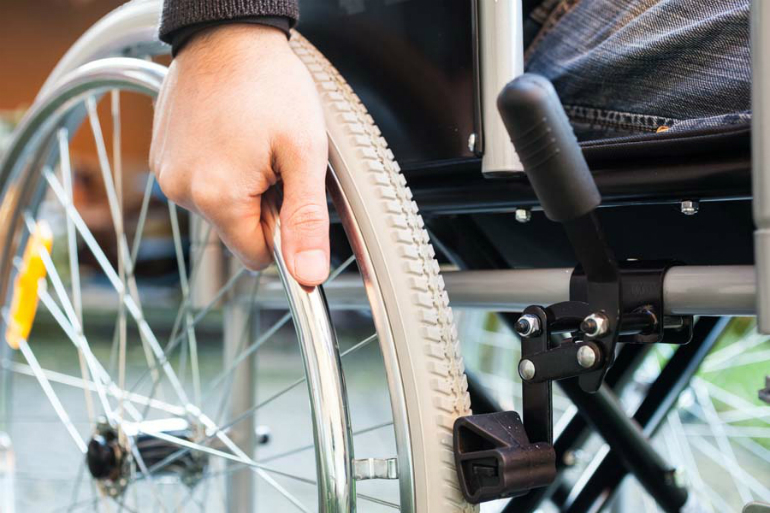Share:
Take it offline!
This Education in Motion resource is also available as a printable PDF.
Download PDF
What affects the manoeuvrability of a manual wheelchair? The weight of the person who uses it? The material that the frame is made from? In truth, it is both of those things and a host of other variables, including the friction of your wheelchair that will affect your resistance and your bearing and, ultimately, your mobility.
Biomechanical issues (size and position of the wheels, distance between the axles and angulation) also need to be taken into account, as well as other variable related to its use. By taking all of these into account, you will not only choose the best manual wheelchair for you but also have greater success in dealing with mobility problems.
Why it is important to choose the best manual wheelchair
The main objective of a wheelchair is for the user to have maximum functionality, comfort and mobility. An inadequate wheelchair, as well as being uncomfortable, can make you slip, lean, and adopt an uncomfortable posture, which can cause problems in the long run. That is why, it should always be the chair that should fit your needs and not the other way around.
Major brands, such as Sunrise Medical, have adjustable active wheelchair models for any type of user regardless of their size or their disability, in order to provide an optimal mobility experience in their day-to-day life.
When assessing the mobility of a wheelchair, you will have to take into account four factors: how the weight is distributed between the wheels, what the centre of gravity is, the ground on which it is to be used, and the technical aspects (size, material, wheel type etc…).
1. The weight distribution between the front and rear wheels
The weight distribution of a wheelchair user refers to the proportion by which the weight is divided between the front and rear wheels. Generally, the greater the amount of weight on the front wheels, the greater friction will be, so it will require more effort to move it, although you will have greater stability.
A traditional 50% rear-wheel and front-wheel distribution (typical of standard wheelchairs) will guarantee stability, but will also require more effort to move - more appropriate if you are not going to self-propel yourself. An 80% distribution on the rear wheel and 20% on the front, on the contrary, will give you greater mobility, and will be more active. This is therefore recommended if the user has enough strength in the arms.

2. Centre of gravity adjustment
Being able to move the centre of gravity of your wheelchair will allow the maximum adjustment of weight distribution. Generally, light aluminium chairs allow you to adjust it by moving the rear wheel position forwards, backwards, upwards and downwards. The further back and upwards you position the centre of gravity, the more weight you will give to the rear wheels achieving more mobility but less stability. It is advisable to adjust the centre of gravity of your wheelchair to meet your needs.
3. Biomechanical factors of the wheelchair
The wheels play a key role in the mobility of your wheelchair. When choosing a wheel material, pneumatic ones are more comfortable and allow shock absorption, but produce more friction. On the contrary, solid ones are worse at adapting to harder ground, but they facilitate mobility. Regarding the size of the wheels, the smaller they are, the less friction they will produce since there is less contact surface with the ground, but this also reduces their grip.
Both in terms of material and wheel size, you must be clear on the terrain on which you will use the wheelchair. The softer it is, the more friction and more momentum you'll need to move.
The distance between the wheels will greatly influence mobility and stability. The smaller the wheelbase, the better the wheelchair will turn and the more manoeuvrable it will be, however, as in all previous cases, greater mobility is usually synonymous with less stability.
4. The terrain on which the wheelchair will be used
Regarding the use of your manual wheelchair indoors or outdoors, if you are going to use it indoors or play sports, it is better that the front wheels are smaller, because they allow faster turns. Outside, or on rough terrain, it is better that the front wheels are bigger because the contact surface with the ground is bigger and so the imperfections of the terrain can be absorbed.
At Sunrise Medical we can help you choose the right manual wheelchair for you with a free assessment with one of our authorised dealerships. Simply contact us so we can put you in contact with your nearest dealership.